News from the IOCCG
2018 Summer Lecture Series
The successful fourth IOCCG Summer Lecture Series, Frontiers in Ocean Optics and Ocean Colour Science, was recently hosted by the Institut de la Mer de Villefranche (IMEV) in Villefranche-sur-Mer, France (25 June to 6 July 2018), and was supported by contributions from CNES, EUMETSAT, NOAA, GIS-COOC, the Ocean Carbon & Biogeochemistry Program (OCB), SCOR, and the LOV lab, which are gratefully acknowledged.
A total of 21 students (out of 130 applicants) hailing from 16 different countries were selected to attend the two-week training course. Twelve distinguished ocean colour scientists delivered a wide range of lectures covering the fundamentals of ocean optics and atmospheric correction as well as various applications (harmful algal blooms, remote sensing in shallow and turbid waters, numerical modelling, coccolithophores, fisheries research etc.). Practical hands-on lab sessions helped students understand the properties of light and how to collect high-quality in situ data and interpret the measurements. Furthermore, several group discussion sessions facilitated interaction between the students and lecturers, allowing them to have in-depth deliberations with leaders in the field, both on topics from the lecture series, as well as their own scientific research. Judging by the feedback from the students, the training course was a great success. Thank you to all the energetic lecturers who volunteered their time to teach at this event. The lecture slides and video recordings of all the lectures are now available on the IOCCG website at: http://ioccg.org/what-we-do/training-and-education/ioccg-sls-2018/. This is an excellent resource on a range of ocean colour topics for all researchers.
2019 International Ocean Colour Science Meeting
 We are pleased to announce that registration for the 2019 International Ocean Colour Science (IOCS-2019) meeting will open in mid-October 2018. This year there will be a small registration fee to help defray expenses. Discounted early registration rates will apply until 31 December 2018, after which regular rates will apply until 8 Mach 2019.
We are pleased to announce that registration for the 2019 International Ocean Colour Science (IOCS-2019) meeting will open in mid-October 2018. This year there will be a small registration fee to help defray expenses. Discounted early registration rates will apply until 31 December 2018, after which regular rates will apply until 8 Mach 2019.
This event, convened by the IOCCG, will take place from 9-12 April 2019 in Busan, South Korea, hosted by the Korea Institute of Ocean Science and Technology (KIOST). The NASA Ocean Color Research Team (OCRT) meeting is scheduled to take place on 8 April, 2019, prior to the IOCS-2019 meeting. Join ocean colour scientists from around the world and participate in breakout workshops covering a wide range of topics, cutting-edge keynote talks, poster sessions and town halls. Nine breakout sessions will address the following broad topics:
- Emerging new technologies for OC research (including lidar, polarimetry, drones etc.)-
- Atmospheric correction under complex/extreme environments
- Low cost validation methods and approaches (including citizen science)
- Optically-complex and shallow waters (including coastal and inland waters)
- (Phyto)plankton characterisation including PFTs, HABs and higher trophic levels
- Oceans and climate (including global modelling, polar ecology)
- Vicarious calibration and validation protocols for satellite ocean colour products (including uncertainties, in situ data). These two topics will be dealt with sequentially.
- High temporal (e.g., GOCI) and spatial resolution applications.
- Research to operations (R2O) applications – including NRT forecasting, HABs, water quality, user requirements etc.
The call for Session Chairs to develop and lead these breakout sessions will open in September 2018. The IOCS-2019 meeting website https://iocs.ioccg.org/ will be updated as planning progresses, so please check back periodically.
IOCCG Reports Translated into Chinese
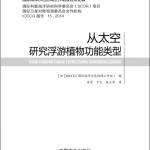 We are pleased to announce that several of the IOCCG reports have been translated into the Chinese language as a service to the community, and are now available on the IOCCG website at: http://ioccg.org/what-we-do/ioccg-publications/ioccg-reports/.
We are pleased to announce that several of the IOCCG reports have been translated into the Chinese language as a service to the community, and are now available on the IOCCG website at: http://ioccg.org/what-we-do/ioccg-publications/ioccg-reports/.
Several years ago Dr. Sihai Li of the National Marine Data and Information Service (NMDIS), China, kindly arranged to have IOCCG Reports 1, 2 and 3 translated into Chinese, and more recently, Dr. Jing Yu (South China Sea Fisheries Research Institute, Chinese Academy of Fishery Sciences, China) arranged to have IOCCG Reports 8 and 15 translated. IOCCG Report 7 may also be translated into Chinese in the near future.
News from ESA
Sentinel-3 Mission Status
Sentinel-3A:
OLCI-A performance is nominal, continuing to operate within expected parameters.
Copernicus Sentinel-3B was successfully launched on 25 April 2018 and will soon provide valuable information for climate change monitoring and observations of inland and oceanic waters. On 6 June 2018 Sentinel-3B reached its tandem position, placing it thirty seconds in front of Sentinel-3A, allowing for intercalibration between the two sensors. Level-1B and Level-2 sample data for OLCI were released to the Sentinel-3 Validation Team (S3VT) on June 28th and July 12th, respectively. Validation data for the SRAL altimeter is also now available to S3VT. At the beginning of October 2018, after 4 months of tandem acquisitions, the spacecraft is planned to drift to its nominal position of 140 degrees phasing to Sentinel-3A.
Ongoing analyses of L1B products suggests that OLCI-B is radiometrically stable and less bright than OLCI-A, being more similar to MERIS. Comparison of the standard open-water Level-2 chlorophyll product with the analogous OLCI-A product and VIIRS indicates that, for the oligotrophic gyres, [Chla] OLCI-A < [Chla] OLCI-b < VIIRS, and for turbid waters, VIIRS < [Chla] OLCI-b < [Chla] OLCI-A. However, System Vicarious Calibration gains are not yet available or applied to OLCI-B, so deviations in radiometric and derived products are expected, and analysis is ongoing. Data are not yet continuously available, and changes in instrument characterisations may still occur. Sentinel-3B will remain in the commissioning phase until the “In-Orbit Commissioning Review”, planned for mid-October 2018. Routine operations are expected to start at the beginning of 2019.
Updated products:
In future operational processing, the OLCI NN products will switch to using an alternative neural network, which shows improved performance in optically complex waters. The alternative neural network plug-in is available through the S3VT website and can be used via the SNAP C2RCC processor. The neural network will introduce a new Cloud Risk flag for complex waters. Additional work is underway to improve the bright pixel correction, and consider the chlorophyll index algorithms for application to oligotrophic gyres.
ESA FRM4SOC Workshop
The European Space Agency, NPL and the FRM4SOC team invite you to an international workshop to discuss the future implications of a “Fiducial Reference Measurement Network for Satellite Ocean Colour” . The workshop will be at the National Physical Laboratory (NPL) in Teddington, London on 4-5 October 2018. Registration and abstract submission are open at https://frm4soc.org/index.php/activities/final_workshop/ and the project has organised a special issue in MDPI Remote Sensing to publish the principal findings from the FRM4SOC project and the key papers of the event.
Fiducial Reference Measurements (FRM) are a suite of independent ground measurements that provide the maximum return on investment for a satellite mission by delivering, to users, the required confidence in data products, in the form of independent validation results and satellite measurement uncertainty estimation, over the entire end-to-end duration of a satellite mission. Within this context, the European Space Agency (ESA) has funded a series of projects targeting the validation of satellite data products (e.g. for altimetry, atmosphere, land, and ocean) and setting up the framework, standards, and protocols for future satellite validation efforts. The FRM4SOC project has been structured to provide this FRM basis for satellite ocean colour.
ESA to Provide OC Data from Indian Mission
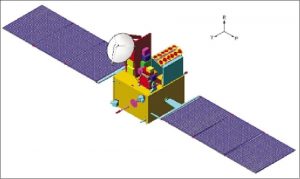 ESA, together with geo-information company GAF AG, have agreed to continue data acquisition from the Ocean Colour Monitor (OCM) aboard the Indian OceanSat-2 satellite until 31 March 2019, to promote scientific research and applications. Thanks to the wide swath of the OCM sensor, Europe and the surrounding waters are covered every two days. Since the start of the operational acquisitions on 1 January 2016, OCM data from satellite passes within the five degree visibility cone of the ground station in Neustrelitz have been acquired, processed and delivered to ESA in near real-time. This data can be accessed free of charge through ESA’s Third Party Missions dissemination service, after registration. OceanSat-2 can help to provide invaluable data on the chlorophyll-a pigment distribution across the oceans together with past missions such as MERIS and SeaWiFS, and with the current OLCI instruments on Sentinel-3.
ESA, together with geo-information company GAF AG, have agreed to continue data acquisition from the Ocean Colour Monitor (OCM) aboard the Indian OceanSat-2 satellite until 31 March 2019, to promote scientific research and applications. Thanks to the wide swath of the OCM sensor, Europe and the surrounding waters are covered every two days. Since the start of the operational acquisitions on 1 January 2016, OCM data from satellite passes within the five degree visibility cone of the ground station in Neustrelitz have been acquired, processed and delivered to ESA in near real-time. This data can be accessed free of charge through ESA’s Third Party Missions dissemination service, after registration. OceanSat-2 can help to provide invaluable data on the chlorophyll-a pigment distribution across the oceans together with past missions such as MERIS and SeaWiFS, and with the current OLCI instruments on Sentinel-3.
First EXPORTS Field Campaign
 The NASA- and NSF- supported field campaign EXPORTS (EXport Processes in the Ocean from Remote Sensing) is aimed at quantifying the export, fates and carbon cycle impacts of upper ocean net primary production (NPP) using satellite observations and state of the art ocean technologies. The first EXPORTS field deployment will start on 10 August 2018 for 27 days of coordinated sampling around Station P (50°N 145°W) in the Northeast Pacific ocean. Several autonomous vehicles will be deployed before the ship observations. An instrumented Lagrangian float will be deployed at depth and used to set the spatial center of the sampling program, while an instrumented Seaglider will be used to provide vertical and some horizontal spatial information around the Lagrangian float’s drift. For more information see https://www.us-ocb.org/updates-and-plans-for-the-first-exports-field-campaign/
The NASA- and NSF- supported field campaign EXPORTS (EXport Processes in the Ocean from Remote Sensing) is aimed at quantifying the export, fates and carbon cycle impacts of upper ocean net primary production (NPP) using satellite observations and state of the art ocean technologies. The first EXPORTS field deployment will start on 10 August 2018 for 27 days of coordinated sampling around Station P (50°N 145°W) in the Northeast Pacific ocean. Several autonomous vehicles will be deployed before the ship observations. An instrumented Lagrangian float will be deployed at depth and used to set the spatial center of the sampling program, while an instrumented Seaglider will be used to provide vertical and some horizontal spatial information around the Lagrangian float’s drift. For more information see https://www.us-ocb.org/updates-and-plans-for-the-first-exports-field-campaign/
News from NOAA and EUMETSAT
The First Operational Satellite Oceanography Symposium, initiated jointly by NOAA and EUMETSAT, aims to enable the understanding the barriers (perceived or actual) and facilitate the widespread incorporation of satellite ocean observations into the value chain from data to useful information across the range of operational applications. In this symposium, an international community of satellite operators, information producers and users will exchange facts and ideas to 1) understand user needs and expectations, and 2) develop interoperability standards and establish best practices that will lead to more universal use of ocean satellite data. Several international organizations have given their enthusiastic endorsements. We look forward to you joining us at the NOAA Center for Weather and Climate Prediction in College Park, MD, in the Washington DC area on 18-19 June 2019. See the https://coastwatch.noaa.gov website or click the graphic below to link to a “save the date” flyer. More details will be coming soon.
Upcoming Meetings
The joint GEO AquaWatch/GloboLakes 2018 Meeting “Earth Observation of inland and coastal water quality: recent developments, priorities & public engagement” will take place at the University of Stirling, Scotland from 29-31 August, 2018. The workshop mixes traditional science presentations and interactive poster and plenary sessions. At least one full day will be dedicated to GEO AquaWatch. View the meeting announcement here.
The 2018 AGU Fall Meeting will be held from 10-14 December 2018 in Washington, D.C. The abstract submission site will close on 1 August 2018. Session ID: 44332 (OS002: Advancing the use of multi-angle polarimetry for ocean-color remote-sensing applications) may be of interest to the ocean colour community.
Public Comment Period Open for Science and Technology for America’s Oceans: A Decadal Vision
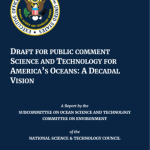 The White House Office of Science and Technology Policy’s National Science and Technology Council (NSTC) has released a draft report that addresses our oceans for the next decade. The report, Science and Technology for America’s Oceans: A Decadal Vision, will provide guidance to Federal agencies and non-federal sectors to align resources and expertise, and further build on science and technology that will improve knowledge and stewardship of the ocean. It will also address issues of national and global importance, and inform decision-making to 2028. Stakeholder and international public comments are welcome until August 27, 2018 and will help the NSTC as they develop the final report. Email any comments to oceandecadalvision@OSTP.eop.gov and include “Science and Technology for America’s Oceans” in the subject line. For more information and to view the document, click here.
The White House Office of Science and Technology Policy’s National Science and Technology Council (NSTC) has released a draft report that addresses our oceans for the next decade. The report, Science and Technology for America’s Oceans: A Decadal Vision, will provide guidance to Federal agencies and non-federal sectors to align resources and expertise, and further build on science and technology that will improve knowledge and stewardship of the ocean. It will also address issues of national and global importance, and inform decision-making to 2028. Stakeholder and international public comments are welcome until August 27, 2018 and will help the NSTC as they develop the final report. Email any comments to oceandecadalvision@OSTP.eop.gov and include “Science and Technology for America’s Oceans” in the subject line. For more information and to view the document, click here.
New Publications
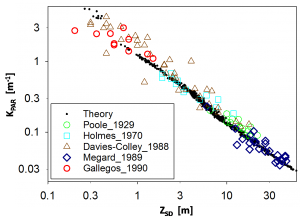
Scatterplot between KPAR and ZSD for data published in the literature and simulated from Hydrolight. From Lee et al. (2018a*).
Several new publications have been added to the list of recent references in the IOCCG Bibliography including a paper by Lee et al. (2018) “Resolving the long-standing puzzles about the observed Secchi depth relationships” soon to be published in Limnology and Oceanography. A Secchi disk (usually white and 30 cm in diameter) is one of the oldest “optical instruments” and was invented in 1860’s by Pietro Angelo Secchi. It is still routinely used today and provides a direct and intuitive measurement of the transparency or clarity of the oceans, seas, and lakes. The property from this measurement is called the Secchi-disk depth (ZSD, m), a depth where this disk is no longer visible from the surface by the human eye.
From the century-long concurrent measurements of ZSD and the diffuse attenuation coefficient (KPAR, m-1), it was found that there is a “universal” relationship between ZSD and KPAR. However, the classical theory about Secchi depth indicates that ZSD is primarily governed by the beam attenuation coefficient, not by KPAR. This discrepancy has puzzled the community for decades. Lee et al. (2015) proposed a new theory to interpret ZSD, and this theory was further employed to explain the historical observations with data simulated by Hydrolight (Lee et al. 2018a*). The figure presents a comparison between simulated ZSD vs KPAR and observed ZSD vs KPAR, which shows that there are remarkable agreements between the two independent datasets. Such results not only provide fresh support for the new theory regarding Secchi depth, but also resolve the puzzles of the historical observations. Further, the new theory suggests that ZSD can be well estimated from measurements of water/ocean colour, therefore global ZSD map can be adequately generated from satellite ocean colour missions. The figure below shows an example of global distribution of ZSD produced from MODIS.
*Lee, Z.-P., S. Shang, K. Du, J. Wei (2018a). Resolving the long-standing puzzles about the observed Secchi depth relationships” Limnol. Oceanogr., In press.
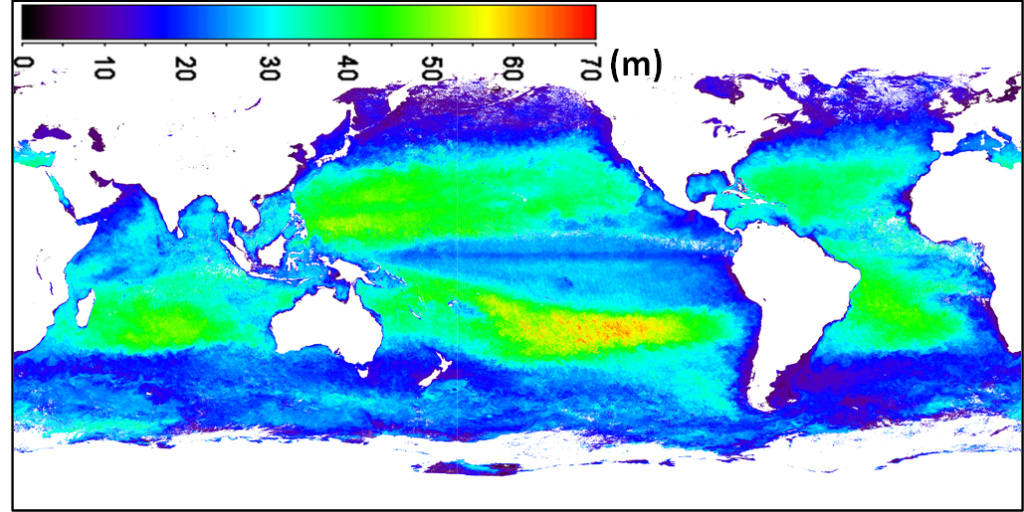
Global distribution of ZSD (October, 2008) obtained from MODIS. From Lee et al. 2018b
A new publication by Smith et al., (2018) entitled “An optimized Chlorophyll a switching algorithm for MERIS and OLCI in phytoplankton-dominated waters” focuses on a new switching algorithm, primarily for HAB applications in the Benguela upwelling region. The approach, which combines weighted blue: green and red:NIR algorithms based on the red:NIR ratio, has been validated using both in situ and satellite radiometry, and provides Chl-a returns over three orders of magnitude with a 35% uncertainty.
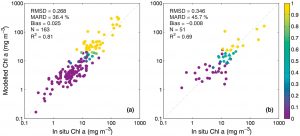
Relationship between in situ Chl-a and modeled Chl-a obtained by application of the switching and blending method to (a) in situ and (b) satellite-derived reflectance from MERIS (N = 46, circles) and OLCI (N = 5, triangles). The colour bar indicates the weighting of the G2B algorithm.
Another new paper by Griffith et al. (2018) in Optics Express provides new and easily applied methods for calibrating multi-spectral fluorometers for the determination of phytoplankton fluorescence quantum yield. Two independent methods using plaques and dyes are assessed, and example Southern Ocean data are shown. The approach allows existing commercial multi-excitation fluorometers to be used for phytoplankton quantum yield measurements – of significant interest to biogeochemical and PFT ocean colour applications.
Employment Opportunities
Several new positions have been added to Employment Opportunities on the IOCCG website including PhD/Postdoctoral fellowships in Italy (CNR-ISAC, Rome), United Arab Emirates (Khalifa University of Science and Technology, Abu Dhabi), France (Université de Bretagne Occidentale, Brest) and China (Xiamen University) as well as two faculty positions at the level of Associate Professor at Xiamen University. Areas of research include ocean lidar, ocean colour remote sensing, and satellite oceanography. For further details on these positions see: http://ioccg.org/resources/employment-opportunities/

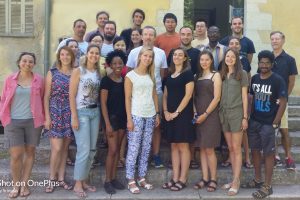
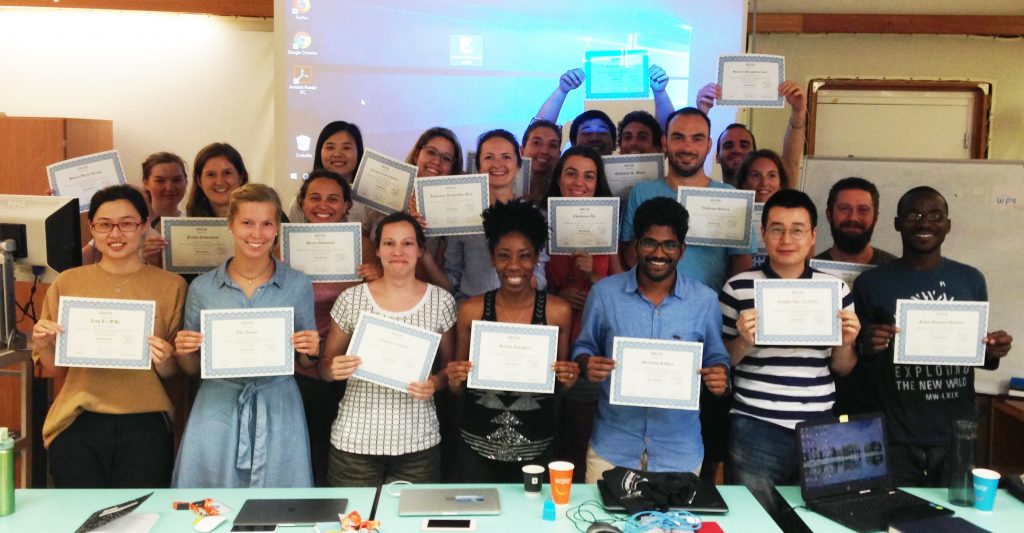
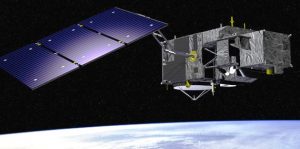

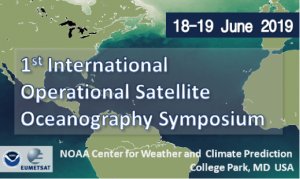
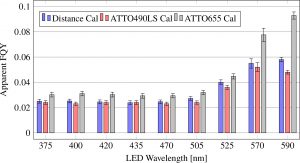

 The sixth International Ocean Colour Science (IOCS) meeting will take place in Darmstadt, Germany from 1 – 4 December 2025, hosted by EUMETSAT and ESA with support from other agencies.
The sixth International Ocean Colour Science (IOCS) meeting will take place in Darmstadt, Germany from 1 – 4 December 2025, hosted by EUMETSAT and ESA with support from other agencies.